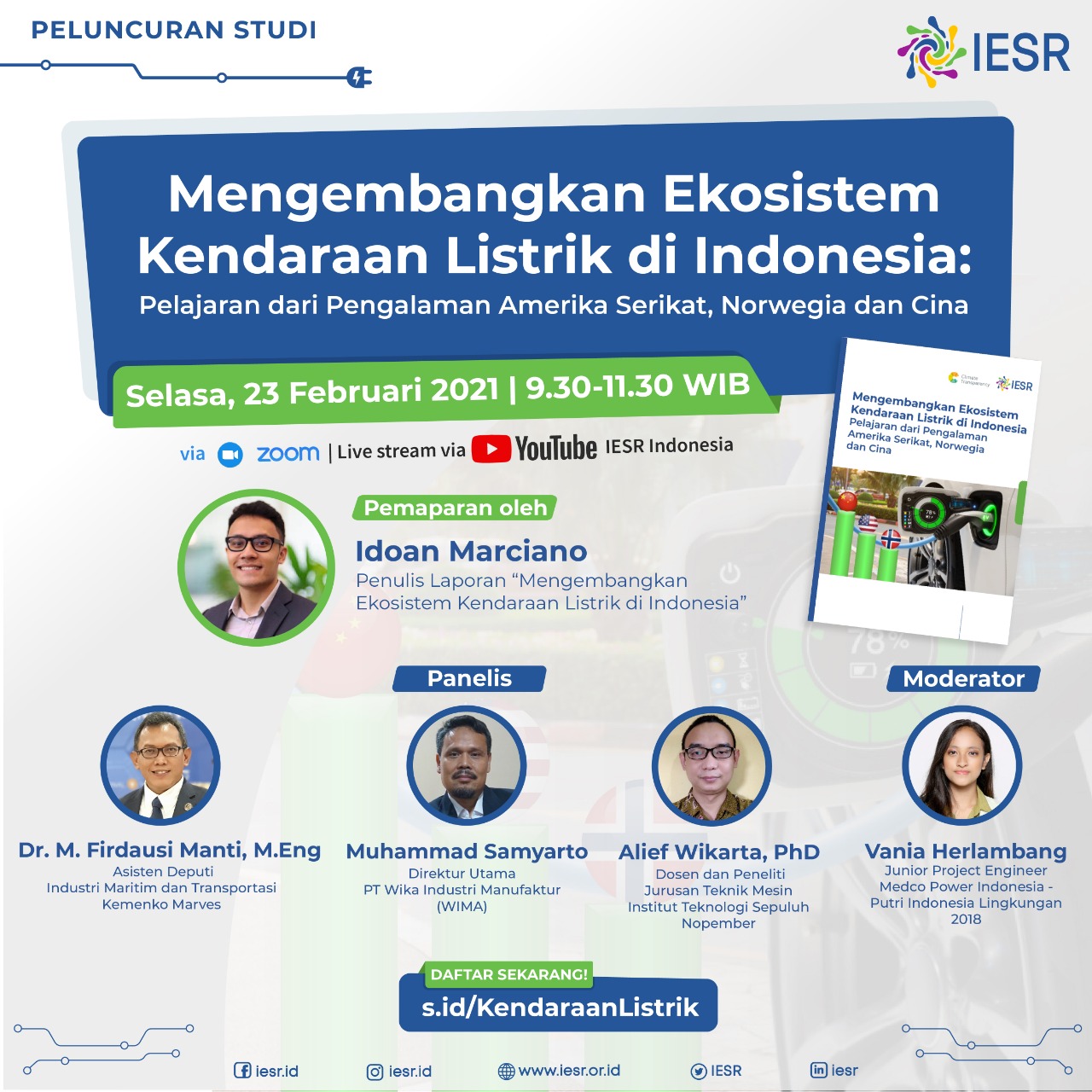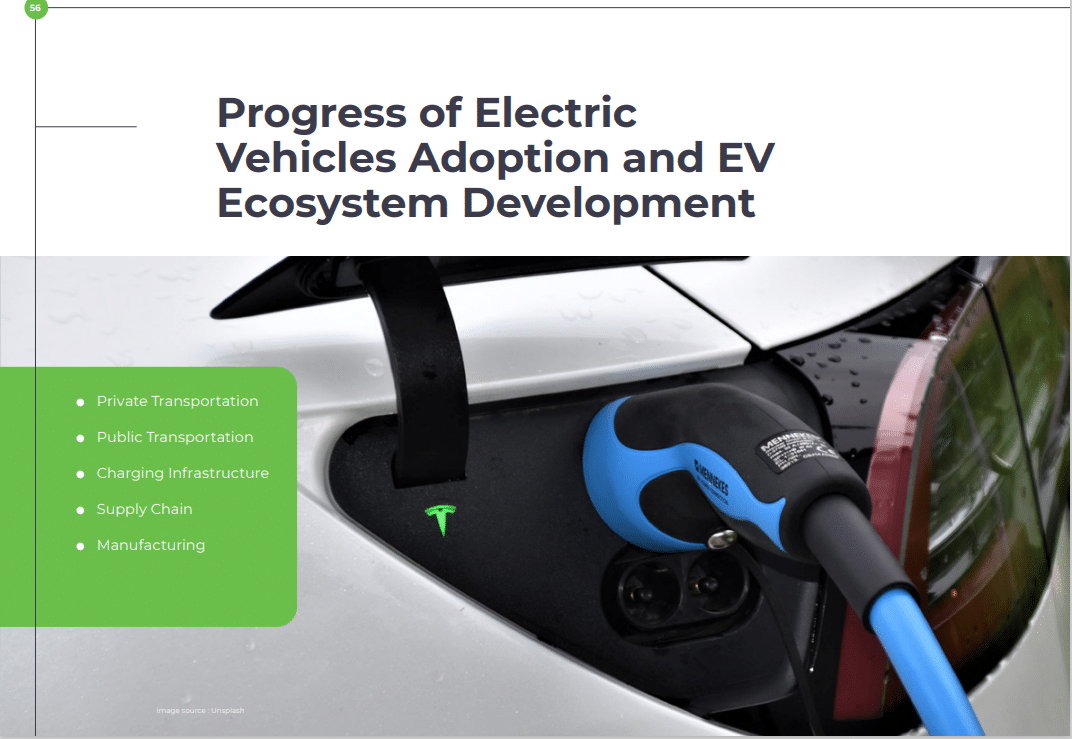Executive Director of the Institute for Essential Services Reform (IESR), Fabby Tumiwa, said the government's efforts to accelerate the use of electric vehicles reflect the urgency of transforming the automotive industry.
Read more on Tribunnews.
Incentives for electric vehicles should target electric-based public transportation and electric motorbikes. On the other hand, the electric vehicles ecosystem, such as recharging stations and battery exchanges, needs to be continuously developed.
Read more on Kompas.
The government's decision not to provide cash assistance to purchase electric cars is supported by several parties. Electric vehicle incentives in the form of price reductions are considered more suitable for electric motorbikes.
Read more on Tempo.

Jakarta, 21 February 2023 - Decarbonization of the transportation sector is a crucial strategy in climate change mitigation to prevent the earth's temperature from rising beyond 1.5 degrees Celsius. In Indonesia, besides the use of biofuels, vehicle electrification can cut 23% of greenhouse gas (GHG) emissions from the transportation sector.
The Institute for Essential Services…

February 19, 2023 - The Institute for Essential Services Reform (IESR) launched Indonesia Electric Vehicles Outlook 2023 for the first time. This report discusses the status of the development of electric vehicles for passengers and the supporting ecosystem for developing electric cars in Indonesia. IESR views that climate change mitigation with a significant…
Based on IESR calculations, when people switch to using electric motorbikes, the savings from purchasing fuel that can be enjoyed reach IDR 5-8 million per year.
Read more on Kata Data.

The use of electric vehicles as one of the emission reduction actions in the transportation sector is expected to replace fossil fuel-based vehicles. The electric vehicle which has higher efficiency, makes the energy consumption required far less in comparison to conventional vehicles, so they can produce much lower emissions. If supported by the use of…

Despite the Ministry of Industry targets to increase annual electric vehicles (EV) sales to 400,000 units (passenger cars) and 1,760,000 units (motorcycles) by 2025, the current EV adoption rate is still low, writes Idoan Marciano, one of the authors of the Indonesia Energy Transition Outlook (IETO) 2021 . By 2020, electric cars only reached…
